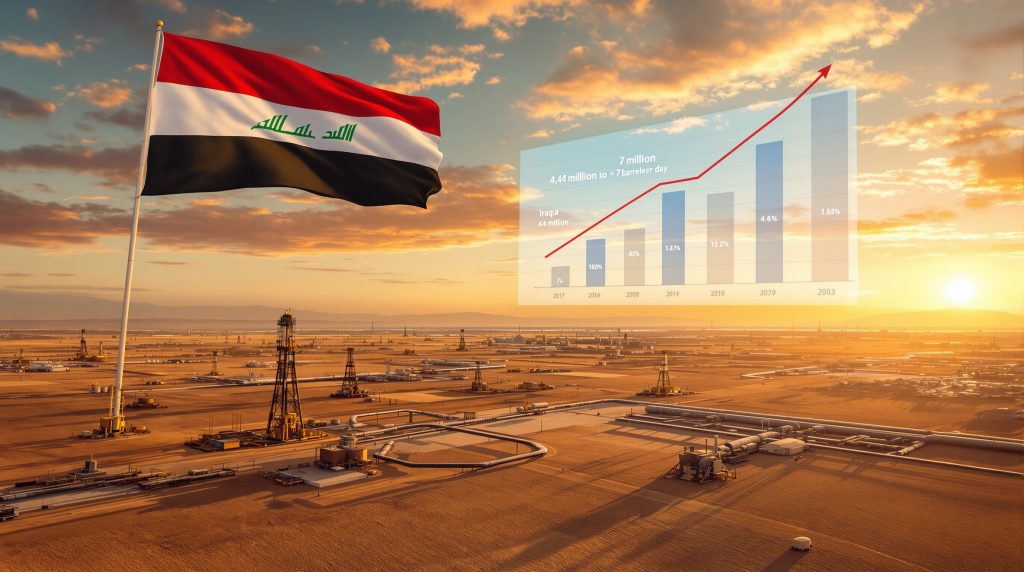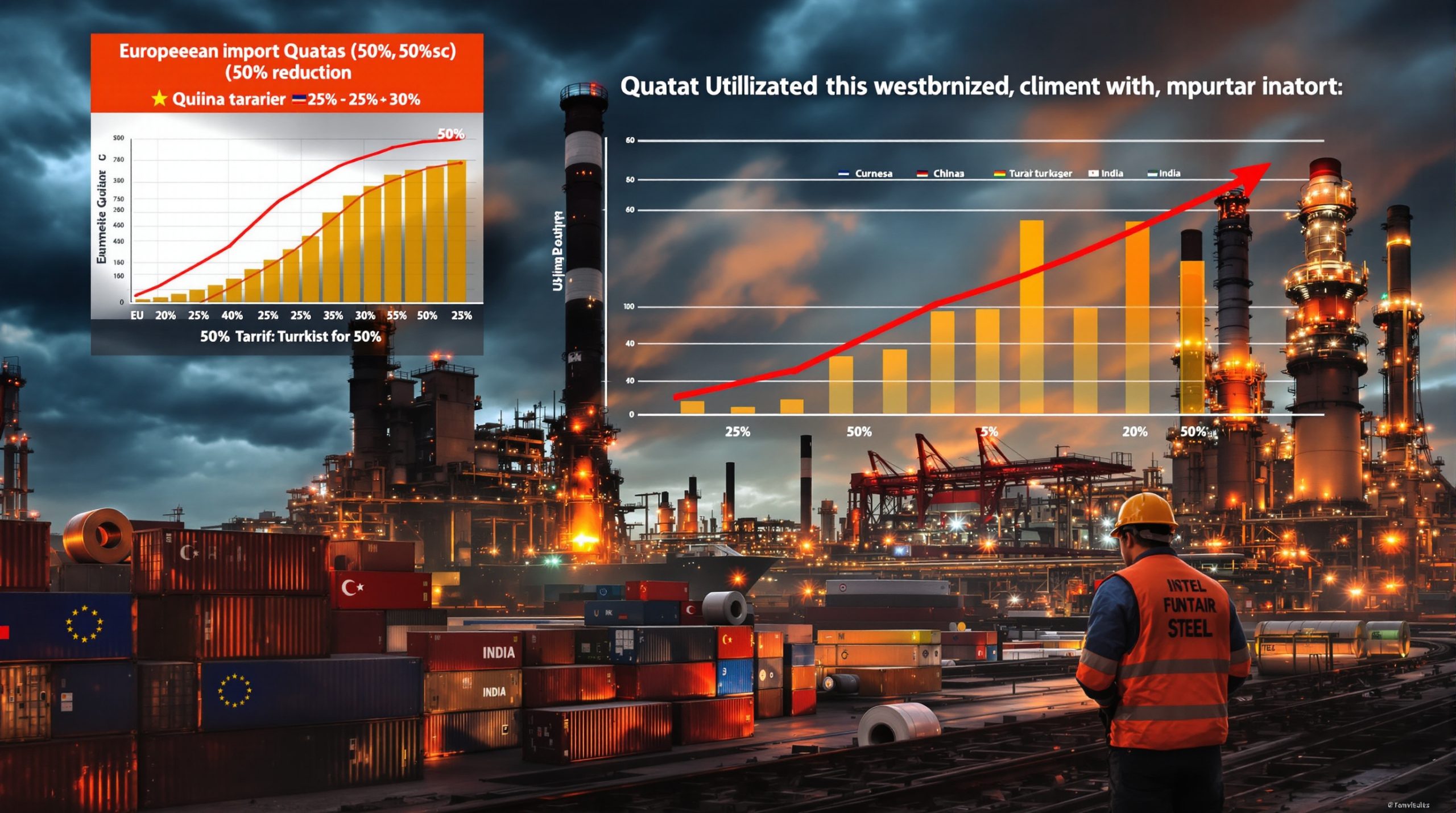Iraq's Ambitious Oil Production Strategy: A Path to 5.5 Million BPD
Iraq, OPEC's second-largest producer, has unveiled strategic plans to significantly increase its oil production capacity over the coming years. With current output hovering around 4.4 million barrels per day (bpd), Iraqi officials have outlined a comprehensive roadmap to reach 5.5 million bpd by the end of 2025, with further expansion targeted for subsequent years. This ambitious strategy represents one of the most significant potential growth stories in global energy markets, potentially affecting oil price dynamics worldwide.
Current Production Status and Near-Term Goals
Iraq currently maintains production levels of approximately 4.4 million bpd, operating within the constraints of OPEC+ agreements. The nation's oil ministry has established a structured approach to increase this capacity by more than 25% within the next year, focusing on both brownfield enhancements and greenfield developments.
The strategic timeline demonstrates Iraq's determination to maximize the value of its substantial hydrocarbon resources despite facing numerous challenges both domestically and internationally.
Key Production Targets Timeline
| Timeline | Production Target | Percentage Increase |
|---|---|---|
| Current (2025) | 4.4 million bpd | Baseline |
| End of 2025 | 5.5 million bpd | 25% increase |
| 2029 | 7 million bpd | 59% increase |
What Strategic Initiatives Will Drive Iraq's Oil Expansion?
The foundation of Iraq's production growth relies on several interlocking strategic initiatives designed to address historical constraints while leveraging the country's vast petroleum reserves. Industry analysts point to Iraq's massive untapped potential, with some fields still producing well below their optimal capacity.
Enhanced Drilling Program
The cornerstone of Iraq's production growth strategy involves an aggressive drilling campaign across its major oil fields. During the first half of 2025 alone, the country has developed 113 oil wells through a combination of:
- New well drilling in underdeveloped reserves
- Rehabilitation of existing wells with declining production
- Implementation of advanced drilling technologies to access challenging formations
This drilling program is designed to quickly increase output while establishing a foundation for sustainable long-term production growth. According to petroleum engineers familiar with Iraq's geology, many fields have been producing below capacity due to decades of underinvestment and technological limitations. Recent changes in global drilling policy shift strategies have also influenced Iraq's approach.
International Partnerships and Technical Expertise
Iraq has strategically engaged with global energy companies to access technical expertise and investment capital necessary for its ambitious expansion plans:
-
American Service Companies: Collaborations with 28 U.S.-based oilfield service providers including Halliburton, Schlumberger, and Baker Hughes for technical operations and facility upgrades
-
TotalEnergies Partnership: A landmark 30-year contract focusing on:
- Development of the Artawi field with production targets of 210,000 bpd
- Implementation of advanced seawater injection systems for pressure maintenance
- Integration of solar power generation to reduce operational carbon footprint
-
Chevron Agreements: Negotiations for revitalizing exploration and development activities in Nasiriyah and Salahaddin provinces, targeting previously underdeveloped resources
These partnerships reflect a significant shift in Iraq's approach to resource development, moving from isolated national projects to integrated international collaborations that bring cutting-edge technology to the country's oil fields.
Infrastructure Enhancement Projects
Infrastructure limitations have historically constrained Iraq's production potential. Current enhancement initiatives focus on removing these bottlenecks to support increased production volumes.
Kirkuk-Ceyhan Pipeline Expansion
A critical component of Iraq's growth strategy involves expanding export capacity through the Kirkuk-Ceyhan pipeline, with plans to increase flows to 400,000-500,000 bpd by 2026. This infrastructure upgrade addresses one of the key bottlenecks that has historically constrained Iraq's production potential.
The pipeline represents a vital export route for northern Iraqi oil production, connecting fields in the Kurdish region and Kirkuk to international markets via Turkey's Mediterranean port of Ceyhan, as reported by Iraq News.
Reservoir Pressure Management Systems
To maximize recovery rates from existing fields, Iraq is implementing comprehensive reservoir pressure management initiatives, including:
- Water injection systems in southern oil fields
- Gas reinjection projects to maintain reservoir pressure
- Advanced monitoring technologies to optimize production parameters
These systems are particularly critical for Iraq's aging giant fields, where pressure maintenance can significantly extend production lifespans and increase ultimate recovery factors.
What Challenges Could Impact Iraq's Production Goals?
Despite its ambitious targets, Iraq faces significant obstacles that could derail or delay its production expansion plans. Industry observers point to several key risk factors that warrant close monitoring.
OPEC+ Quota Constraints
Despite its ambitious internal targets, Iraq's actual production increases remain subject to OPEC+ agreements. The country has historically struggled with quota compliance, having exceeded its allocation in previous years and now facing compensation requirements that limit its ability to fully utilize allowed quota increases.
Energy economists note that Iraq's relationship with OPEC+ creates a complex dynamic where domestic production capacity may outstrip allowed export volumes, potentially creating storage challenges or requiring production curtailment. The OPEC market influence continues to be a major factor in Iraq's strategic planning.
Political and Regional Complexities
Iraq's oil sector operates within a complex political landscape that presents several challenges:
- Tensions between the federal government and the Kurdistan Regional Government regarding oil rights and revenue sharing
- Security concerns in certain production regions
- Bureaucratic hurdles that can delay project implementations and investment decisions
These political complexities have historically created uncertainty for international investors and occasionally disrupted production operations, particularly in disputed territories.
Infrastructure Limitations
Beyond pipeline capacity, Iraq faces broader infrastructure challenges that could impact its production goals:
- Electricity supply constraints affecting pumping and processing facilities
- Water availability for injection projects
- Export terminal capacities and loading capabilities
These infrastructure limitations require coordinated development alongside production capacity to avoid creating new bottlenecks in the value chain.
How Will Iraq's Expansion Impact Global Oil Markets?
The ramifications of Iraq's ambitious production growth extend far beyond its borders, potentially reshaping global oil market dynamics in significant ways. Current WTI and Brent trends suggest that additional supply from Iraq could influence pricing benchmarks substantially.
Supply Implications
If successful, Iraq's production increase would introduce significant additional volumes to global markets at a time when other major producers face various constraints:
- The planned 1.1 million bpd increase by end-2025 represents approximately 1% of global oil supply
- The longer-term target of 7 million bpd would establish Iraq as an even more pivotal supplier in global energy markets
Market analysts suggest this additional supply could help offset declining production in some mature basins and potentially moderate price volatility by providing additional swing capacity, according to recent analysis from Oil Price.
Investment Opportunities
The ambitious expansion plans create substantial opportunities for:
- Oilfield service providers specializing in enhanced recovery techniques
- Infrastructure development companies focused on export facilities
- Technology providers offering solutions for operational efficiency and emissions reduction
These investment opportunities extend across the entire oil value chain, from upstream exploration and production to midstream transportation and downstream processing. Investors should consider consulting an investment strategy guide before entering this market.
Regional Influence Dynamics
Increased production capacity would strengthen Iraq's position within OPEC+ and potentially reshape regional influence patterns:
- Greater economic leverage in regional negotiations
- Enhanced ability to influence OPEC+ policy decisions
- Improved fiscal stability supporting broader economic development
Energy security analysts note that Iraq's expanded production could alter the strategic calculus of regional powers, potentially creating new geopolitical alignments as the country's importance to global energy markets grows.
What Are the Key Fields Driving Iraq's Production Growth?
Iraq's production growth strategy centers around developing a combination of its established giant fields and newer discoveries, with different development approaches tailored to each asset's unique characteristics.
Southern Fields Development
The majority of Iraq's production growth is expected to come from its southern fields, including:
- Rumaila: Iraq's largest producing field, with ongoing development programs targeting increased recovery rates
- West Qurna: Phased development continuing with international partners
- Zubair: Targeted for production optimization and expansion
- Majnoon: Following the exit of Shell, now under national operation with expansion plans
These southern giants benefit from relatively stable security conditions and established infrastructure, making them logical priorities for near-term production growth.
Northern Region Potential
With improving security conditions and infrastructure rehabilitation, northern fields are also set to contribute to the growth targets:
- Kirkuk: Historic production center with significant remaining potential
- Bai Hassan: Targeted for enhanced recovery techniques
- Exploration blocks: New areas being offered to international companies for exploration and development
Geological experts familiar with Iraq's northern basins suggest these areas could deliver substantial production increases with modern exploration and development techniques that weren't available during earlier development phases.
How Will Iraq Finance This Massive Expansion?
The scale of Iraq's production ambitions requires substantial capital investment, raising important questions about financing strategies and economic returns.
Investment Requirements and Sources
The scale of Iraq's production ambitions requires substantial capital investment, estimated at tens of billions of dollars over the coming years. Funding sources include:
- International oil company direct investments through service contracts
- National budget allocations for oil sector development
- International financial institution support for infrastructure projects
- Potential innovative financing mechanisms including production-sharing arrangements
Financial analysts note that Iraq's ability to secure this investment will depend heavily on creating an attractive risk-reward proposition for international capital in competition with other global opportunities.
Economic Return Projections
The economic rationale for these investments is compelling:
- At current oil prices, each additional million barrels of daily production represents approximately $25-30 billion in annual revenue
- Improved recovery rates from existing fields offer some of the lowest marginal production costs globally
- Infrastructure investments create multiplier effects throughout the broader economy
These economic returns make oil sector development a logical priority for Iraq's overall development strategy, though questions remain about how effectively these revenues will be distributed across the country's population.
What Environmental Considerations Factor Into Iraq's Expansion Plans?
While production growth remains the primary focus, Iraq's strategy increasingly incorporates environmental considerations, both to comply with international standards and to maximize resource utilization.
Gas Flaring Reduction
A significant environmental challenge accompanying Iraq's oil production has been extensive gas flaring. New development plans incorporate:
- Gas capture systems for power generation
- Processing facilities to convert associated gas into marketable products
- Compliance mechanisms to meet international environmental standards
Environmental specialists highlight that Iraq flares more natural gas than many countries produce, representing both a substantial environmental challenge and an economic opportunity if properly captured.
Water Management Strategies
With water injection critical to maintaining reservoir pressure, sustainable water management is increasingly important:
- Seawater desalination projects for southern field injection
- Water recycling systems to minimize freshwater usage
- Monitoring programs to prevent aquifer contamination
These water management considerations take on particular importance given Iraq's broader water security challenges and transboundary water issues with neighboring countries.
FAQ: Iraq's Oil Production Expansion
Will Iraq's increased production affect global oil prices?
The gradual nature of Iraq's planned increases, combined with OPEC+ coordination mechanisms, suggests market impacts would be managed rather than disruptive. However, if the full 2.6 million bpd increase targeted by 2029 materializes without corresponding demand growth, downward price pressure could result.
Market analysts generally expect that Iraq's production growth will be factored into OPEC+ quota negotiations, potentially allowing for gradual market absorption rather than supply shocks.
Can Iraq realistically achieve these ambitious targets?
Historical precedent shows mixed results with Iraq's production targets. Technical potential exists to reach these goals, but political stability, investment continuity, and infrastructure development will be critical determining factors.
Energy consultants who have worked in Iraq note that while previous targets have often been missed, the current plans incorporate more realistic technical assessments and implementation timelines than some earlier projections.
How does Iraq's expansion compare to other major producers?
Iraq's planned growth rate exceeds that of most major producers outside of the United States and select emerging producers like Guyana. If achieved, the expansion would solidify Iraq's position among the world's top five oil producers.
The scale of Iraq's untapped conventional resources distinguishes it from many other growth opportunities in the industry, which increasingly rely on higher-cost unconventional resources.
What role will international oil companies play?
International companies will provide technical expertise, capital, and project management capabilities through service contracts, while Iraq maintains ownership of its resources. The success of these partnerships will significantly influence achievement of the production targets.
Industry experts note that the service contract model used in Iraq differs substantially from production-sharing agreements used in many other countries, creating unique incentive structures for international partners.
Iraq's Oil Future at a Crossroads
Iraq eyes major oil production surge through these ambitious expansion plans, representing one of the most significant potential growth stories in global energy markets. With plans to increase capacity by over 2.5 million barrels per day within five years, the country is positioning itself to maximize the value of its substantial hydrocarbon resources.
Success will depend on navigating complex political dynamics, securing necessary investments, developing critical infrastructure, and balancing national priorities with international market considerations. If achieved, this expansion would not only transform Iraq's economic prospects but also significantly impact global oil supply dynamics in the latter half of this decade.
The coming months will be crucial as initial project milestones either validate the feasibility of these ambitious targets or signal the need for revised expectations. What remains clear is that Iraq's vast hydrocarbon potential ensures its continuing importance in global energy markets, regardless of the precise timeline of development.
Disclaimer: This article contains forward-looking statements about production targets and market impacts. Readers should be aware that actual outcomes may differ significantly from projections due to political, technical, or market factors beyond current visibility.
Ready to Stay Ahead of the Next Major Resource Discovery?
Discover how significant mineral discoveries can lead to exceptional market returns with Discovery Alert's proprietary Discovery IQ model, delivering real-time ASX announcements straight to your inbox. Explore historic discoveries and their impressive returns at Discovery Alert's dedicated discoveries page and position yourself ahead of the market.




